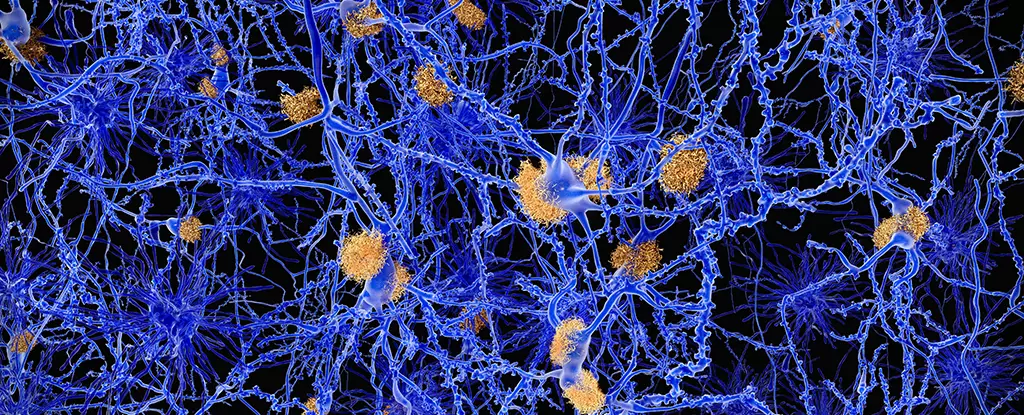In the realm of neurodegenerative diseases like Alzheimer’s, misfolded proteins cast a long, ominous shadow that affects countless lives. These structural aberrations wreak havoc on neural tissue, leading not only to cognitive decline but also to the emotional upheaval that families endure as they watch their loved ones slip away. As we approach a grim milestone with 10 million cases of dementia diagnosed annually, the urgent call for effective treatments has never been louder. Amidst this desperation, an innovative approach using specially designed nanomaterials has emerged, offering a glimmer of hope.
A Revolutionary Approach: Trapping the Culprits
Recent scientific advancements have unveiled the powerful capabilities of a new nanomaterial that can trap misbehaving amyloid beta proteins before they begin their destructive clumping. Developed by a collaborative team of international researchers, this nanomaterial utilizes tiny particles with unique fat- and water-loving properties. This cleverly engineered solution intercedes at a critical juncture, effectively preventing the formation of toxic plaques that could otherwise invade and damage neurons.
Dr. Samuel Stupp’s research reveals a significant insight into the physics of protein behavior. It turns out that misfolded proteins have a tendency to aggregate into destructive fibers, entering neurons and wreaking havoc. By intercepting these proteins at an early stage, this innovative treatment disrupts their progression toward toxicity, shedding light on a pathway that has remained obscured in traditional treatments.
The Science Behind the Innovation
At the heart of this groundbreaking research lies the concept of peptide amphiphiles. These versatile compounds possess a unique ability to interact harmoniously with lipids and water alike. While they are already making their mark in various pharmaceutical applications, this study introduces an additional ingredient: trehalose. This natural sugar exhibits remarkable properties that inhibit the misfolding of proteins, acting as a defender against the initial aberrations that can spiral into severe health crises.
The researchers observed that the combination of trehalose with peptide amphiphiles alters the molecular landscape significantly. It stabilizes the structure, enabling it to capture misfolded proteins while preventing the formation of toxic aggregates. This approach paints a vivid picture of innovation, where a seemingly harmless sugar plays the role of an unsung hero, arresting potential disasters before they wreak irreversible havoc on neural circuits.
Challenging Conventional Wisdom
What is striking about this research is that it challenges the foundational approaches to treating neurodegenerative diseases. Traditional tactics often focus on the later stages of protein aggregation—hunting down established toxic fibers. However, this new methodology shifts the paradigm towards a preemptive strike against misfolded proteins. By destabilizing these proteins before they solidify into damaging structures, researchers effectively sidestep the challenges of dealing with established plaque.
This departure from conventional wisdom is not merely refreshing; it’s essential. With the global population aging at an alarming rate, the call for innovative, early-intervention therapies has become critical. Researchers’ commitment to interrogating the root causes of neurodegeneration embodies a much-needed shift in understanding and addressing the complexities of Alzheimer’s disease.
The Road Ahead: Challenges and Opportunities
While the findings are promising, it is crucial to acknowledge that this research is still in its infancy. Rigorous clinical studies are necessary to understand the long-term effects of these nanomaterials in humans with neurodegenerative conditions. This means that, as we stand at the precipice of this scientific breakthrough, we must temper our expectations and be wary of the hype that often surrounds groundbreaking research.
Moreover, the nuances of individual responses to such treatments will become a focal point of future investigations. No two patients are alike in their disease presentations or progressions, demanding that the research community remain nimble and responsive to the realities of Alzheimer’s treatment.
In a world where Alzheimer’s remains a devastating and inevitable concern for many, the endeavor to harness nanotechnology offers a powerful ray of hope. This innovative approach may not only protect neurons but also transform the way we approach therapeutic interventions, potentially buying valuable time for patients and families alike.


Leave a Reply